- Home
- Identifying Rabbit Pain
Identifying Rabbit Pain
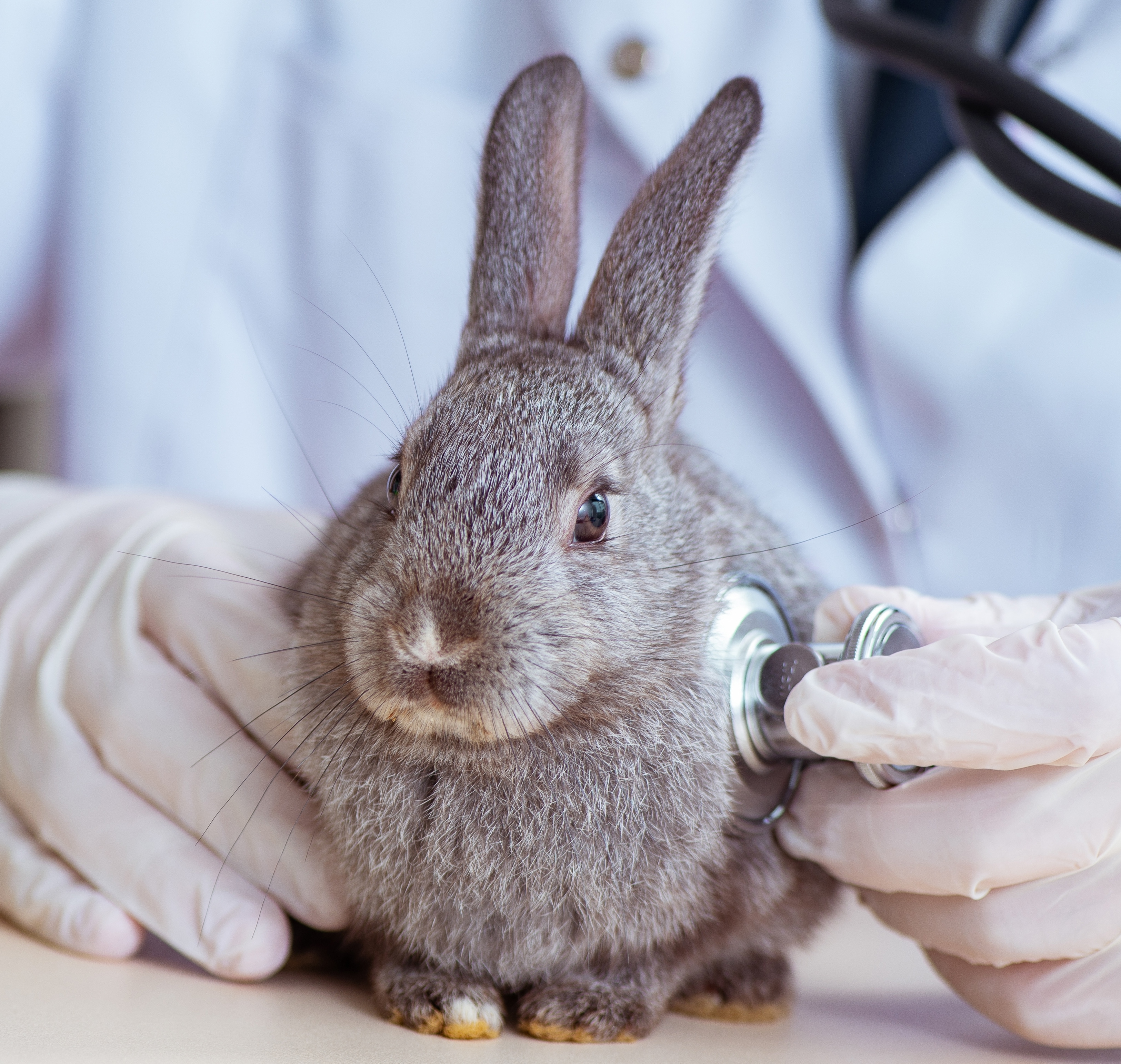 Elnur|Shuttershock.com
Elnur|Shuttershock.comThe information presented is for educational purposes only and does not substitute veterinarian care. This information should not be used for diagnostic purposes, for treatment of an illness or injury and never should be substituted for veterinarian care by a licensed veterinary practitioner. The Educated Rabbit cannot be held responsible for the accuracy of the information contained, nor be held responsible for any action, based on information found in The Educated Rabbit.
Seek advice from your veterinary professional for any rabbit health issues and before administering any drugs!
Signs of a Sick Rabbit
Identifying rabbit pain can be tricky for us humans, especially since rabbits are prey animals and they do not like to advertise when they are not feeling well. After all, there is no reason to let everyone know you are an easy meal. Below are some signs to recognize.
1. Lack of Appetite
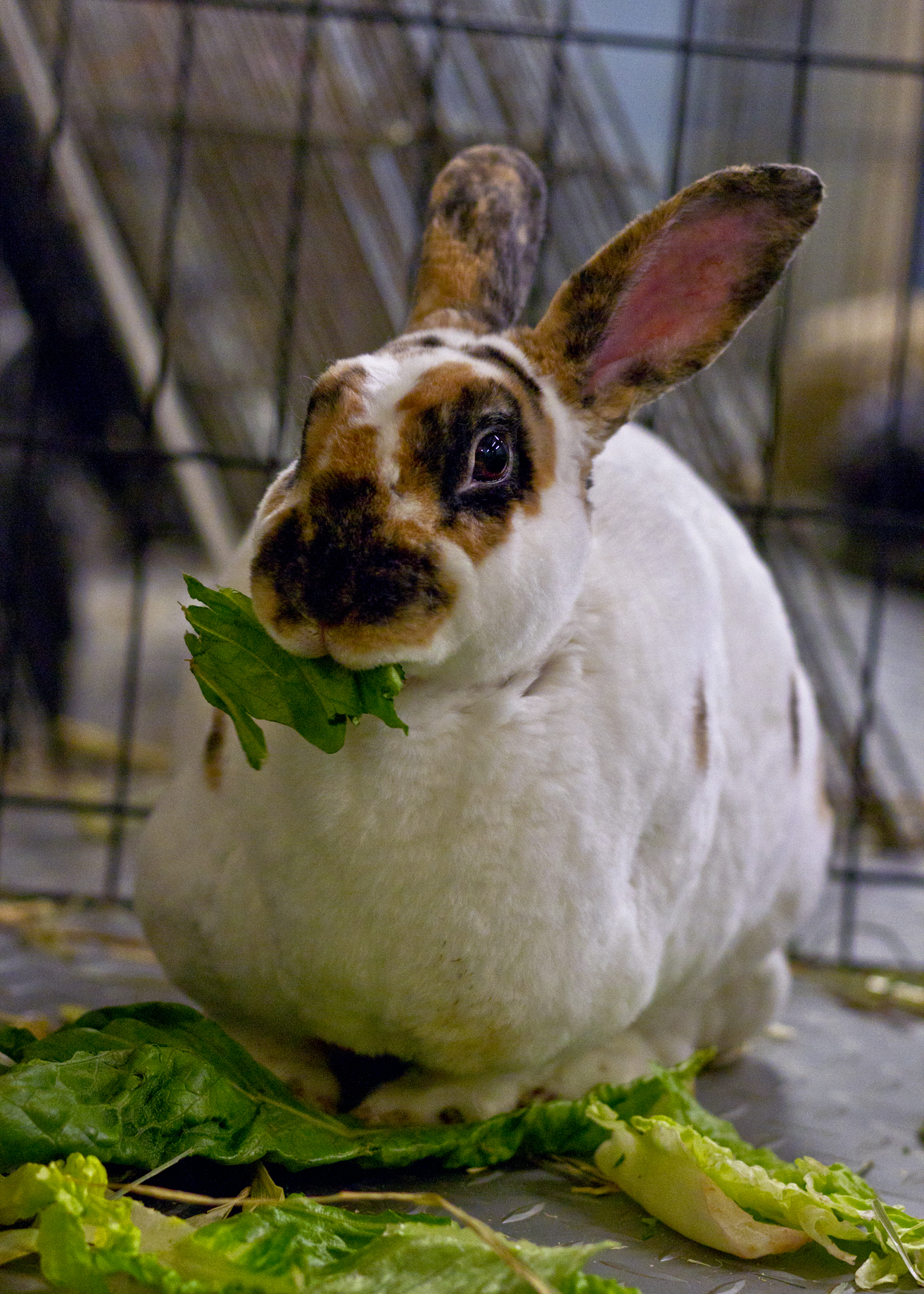 Roxanne has always been a big fan of food.
Roxanne has always been a big fan of food.A normal rabbit is always interested in food. Even if they have just finished their bowl of pellets, they won't turn down their favorite veggie or treat. For years, I have watched rabbits stick their noses into the mouths of their bunny friends, just so they can pull out that half-eaten bit of parsley and eat it themselves. To me this indicates that many rabbits love food more than their best friends. If a bunny is suddenly disinterested - or actually turns away - that will alert me immediately to take a second look.
2. Poop
Non-rabbit owners think it's odd that bunny owners are so well versed in the condition of their bunny's poop. That is because the shape, size, color and consistency of rabbit poop can tell you a lot about the health of the rabbit from whence it came. Small or misshapen poops, poops strung together with fur, very soft, smelly poop, diarrhea or the absence of poop altogether will be signs that something is not quite right.
3. Teeth Grinding
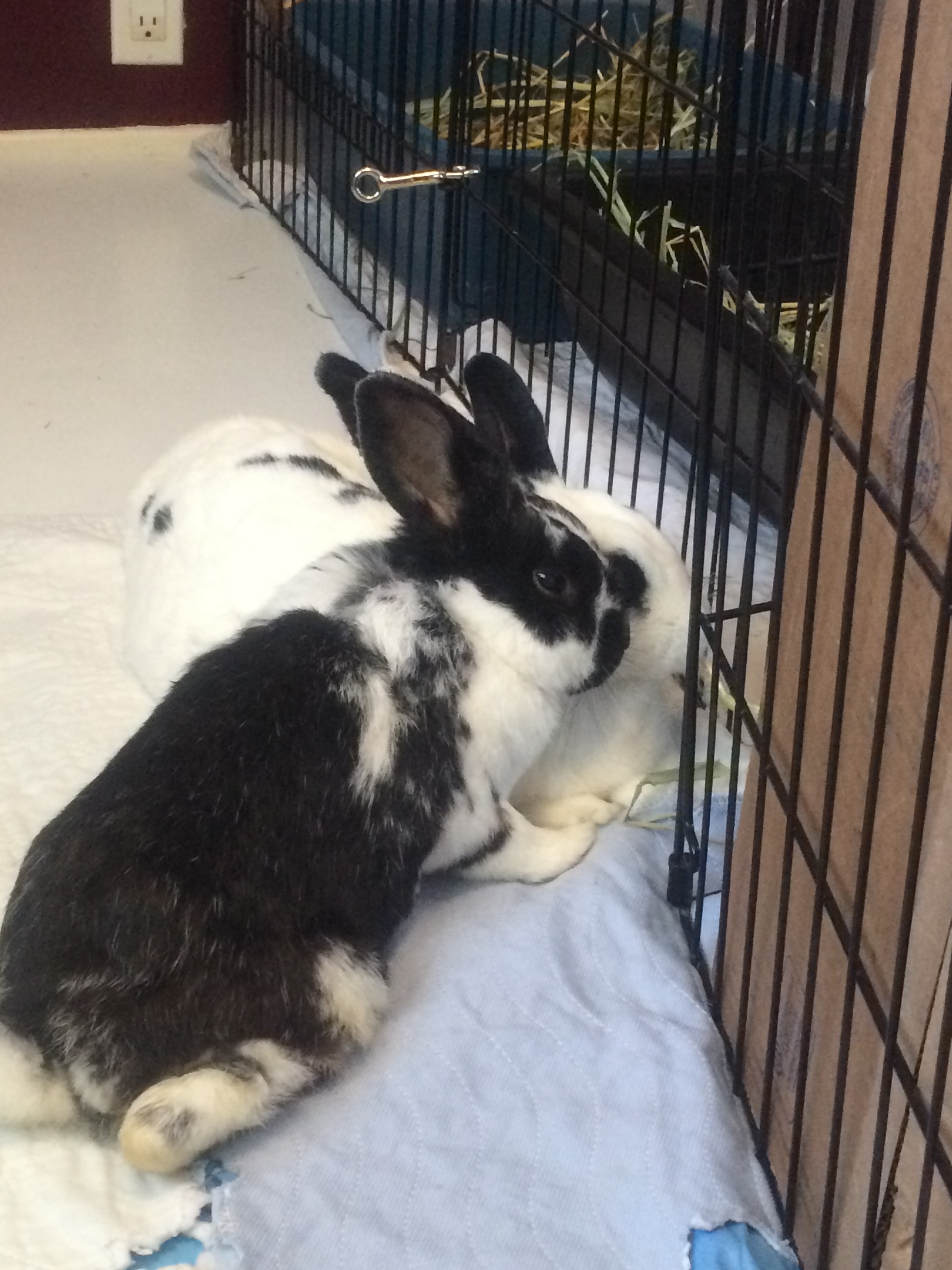 Zoe and Whoppy
Zoe and WhoppyTeeth grinding is different than teeth purring. The difference in sound can be hard to explain, but you will definitely know it when you hear it.
Teeth purring happens frequently when a bunny is happy and content. Their teeth click together in a soft chatter when they are passed out in their favorite spot, or if you rub their cheeks, nose or ears just the way they like it.
Teeth grinding happens when rabbits are in a great deal of pain. It can be louder than the normal teeth purr, but the sound will certainly be sharper. I find it sounds more like grinding glass. If you hear teeth grinding, pain medication should be administered right away and you should bring your pet to the vet.
Click below to hear an example of teeth grinding:
4. Behavior
It's so important to know what is normal for your bunny. Potentially abnormal habits, such as being picky, not jumping towards the food or hiding in a box, may be quite normal for your bunny, but may alarm someone else who doesn't know your rabbit at all. If you know what is normal for your rabbit, you can quickly pick up on unusual behavior. Examples would be an outgoing rabbit suddenly hiding; a timid rabbit lunging and trying to bite; an aloof bun letting you pick him up and pet him; a favorite treat left uneaten. These are all signs that shouldn't be ignored.
5. Body Position
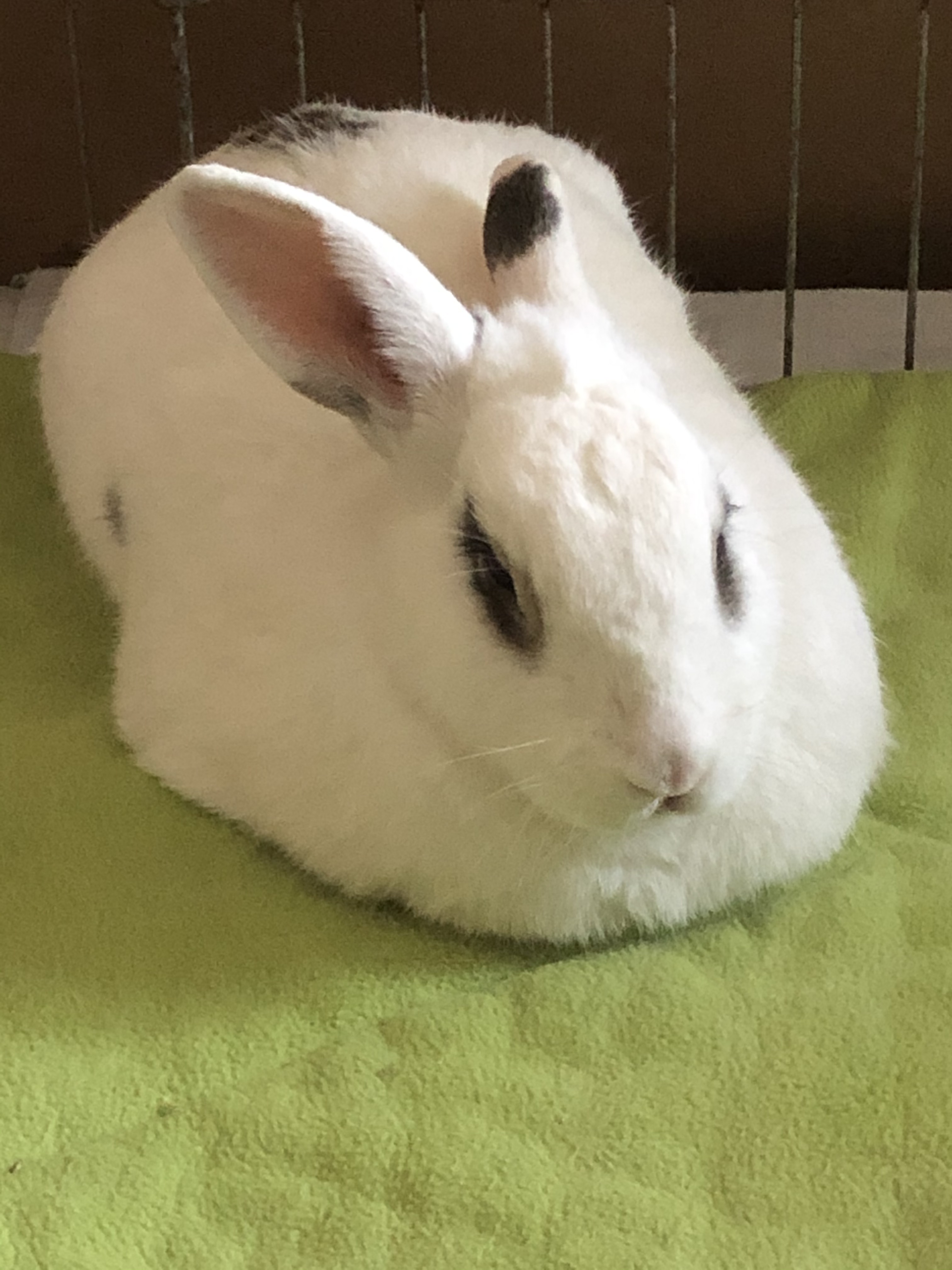 Cupcake resting in his favorite napping spot.
Cupcake resting in his favorite napping spot.Interpreting body language in rabbits can be challenging, since a relaxed rabbit and a rabbit in pain can have very similar body positions.
On the left, Cupcake is in a typical 'loaf' position. He is sitting upright with all four feet tucked underneath him. His ears are somewhat upright and his eyes are open. Rabbits may even nap in this position, however, be aware that they usually sleep with their eyes open no matter what position they happen to be in. You may even catch a napping bunny dream - the mouth will move rapidly, whiskers, feet and/or ears may twitch.
Bunnies will also sit in a loaf position when they are in pain. Is there a difference? Sometimes. Quite often the ears are laid back, the eyes are narrowed (as if squinting) and quite often they are hiding in a box or in a corner.
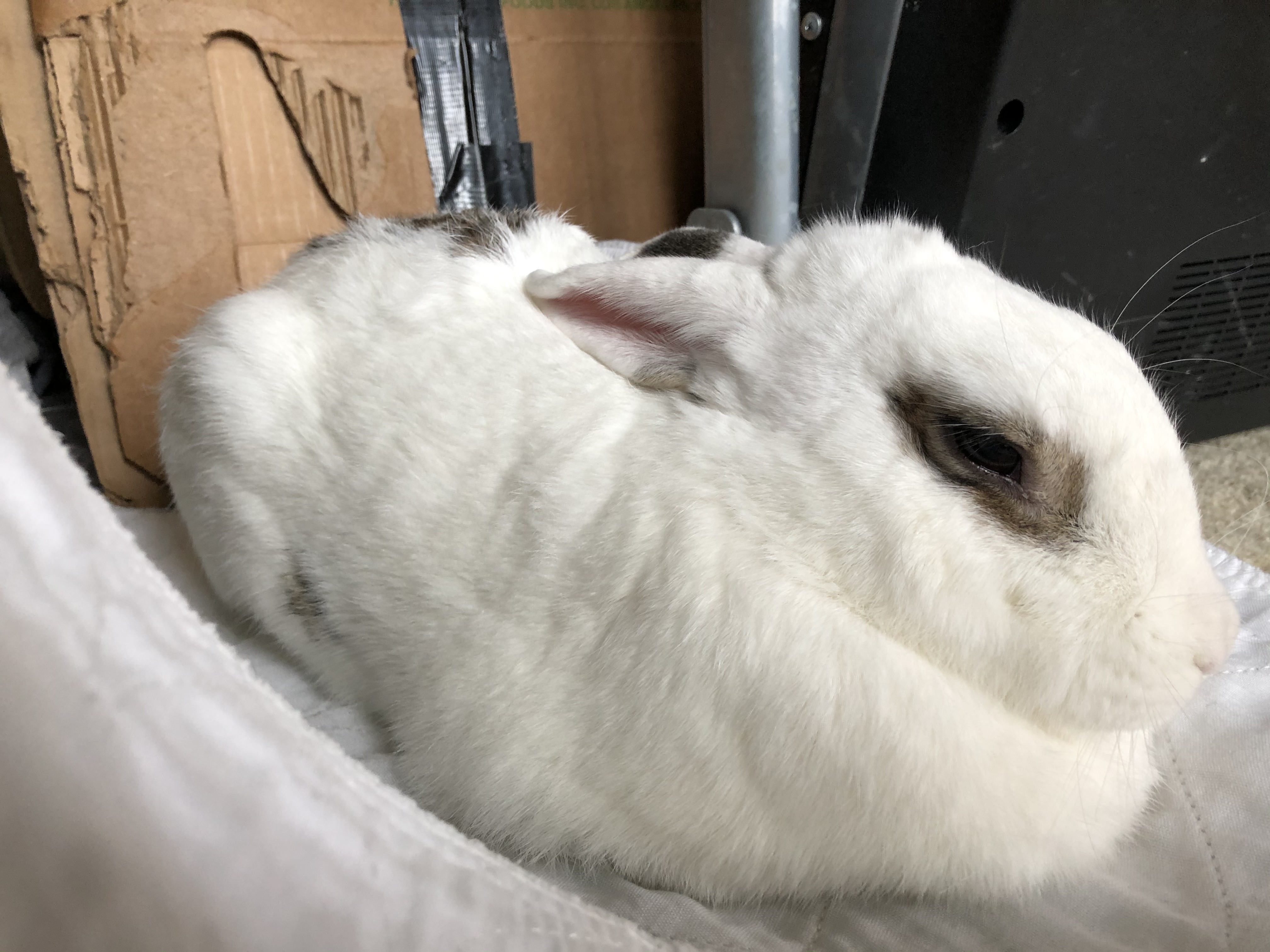 Cupcake sleeping with his ears back.
Cupcake sleeping with his ears back.Unfortunately, many characteristics of sleeping and sick rabbits are interchangeable. For example, Cupcake on the right has his ears flat back (He was not sick at the time of this picture). Even though many sick rabbits flatten their ears, not all do all the time.
So how do you know the difference?
Identifying rabbit pain is not just one thing. It is a combination of all of these signs being discussed. If I see one of my bunnies sitting in the loaf position, I will internally ask myself these questions.
- Is this in the middle of the afternoon during their usual nap time?
- Are they in a usual spot in the pen (or exercise area)? If they are in a very unusual spot (for them) such as behind a litter box or squeezed behind a bookshelf or fridge, I would be concerned - especially if they are not curiously checking out a new place, but rather looking for a quiet place to feel awful.
- Is there poop in the pen? This will be harder with multiple bunnies, unless the bunny in question has easily identifiable poop (such as shape or coloring).
- Are they taking treats?
If the answer to all these questions is 'yes,' I'm not concerned. If the answer is 'no,' I might consider taking the temperature of the rabbit in question.
6. Constantly Shifting Position
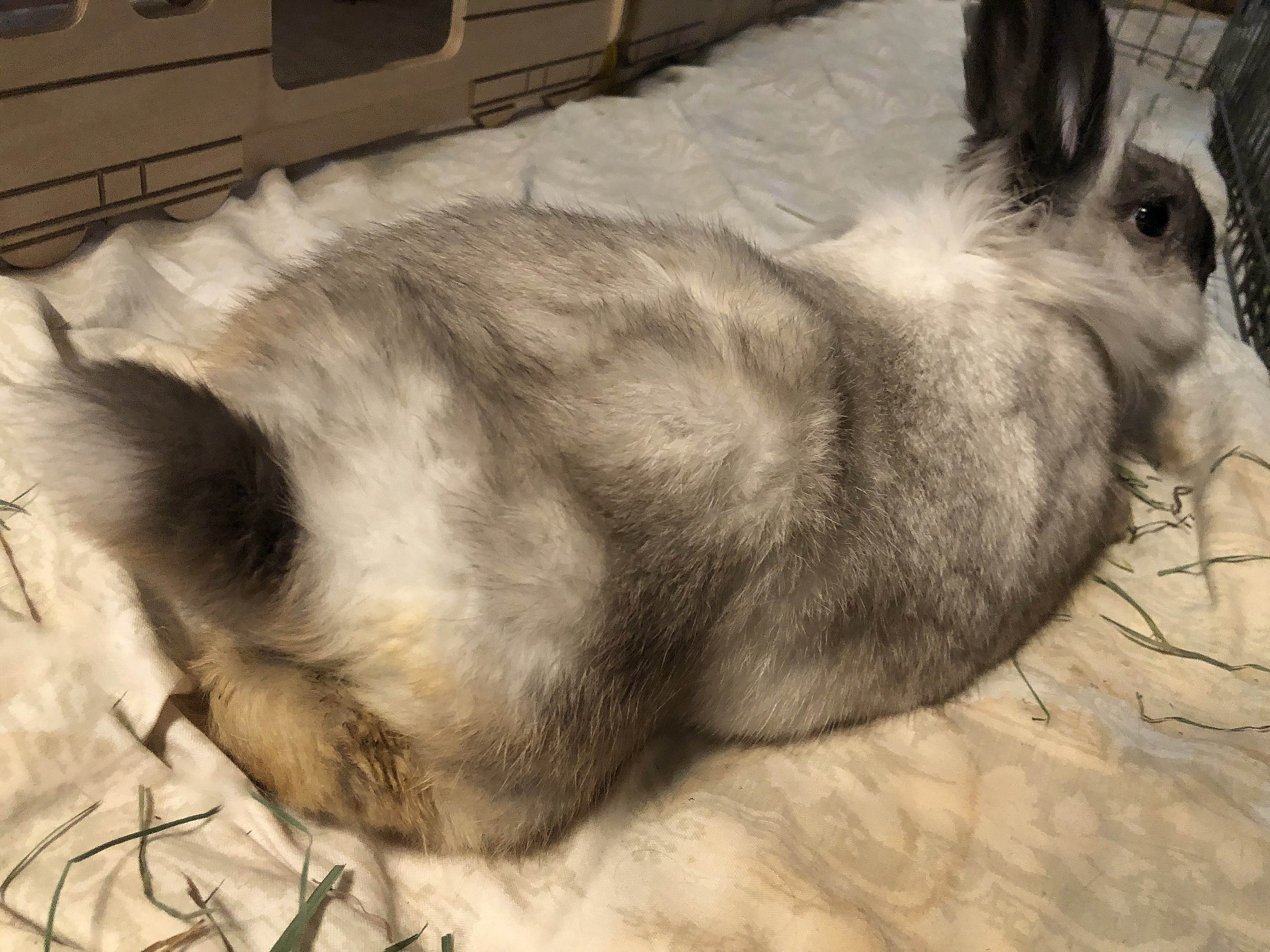 Winston lying down but arching his hips up.
Winston lying down but arching his hips up.Another pain signal is when a bunny is constantly shifting position, especially pressing the stomach to the floor. The bunny may first appear normal. They stand in one corner, wait a moment, then shift to another place in the pen. They may lie down, pressing their stomach to the surface and shifting their body from one side to another. They may even arch their hips upward in an effort to get comfortable.
Frequently this indicates excess gas in their digestive system. It may be something that can eventually work its way out, or it may be the first sign of bloat, which is a more serious condition requiring immediate vet care. It may also indicate pain in the abdomen not necessarily related to the GI tract. Winston will also shift his body in unusual positions if there is too much sludge built up in his bladder.
7. Temperature
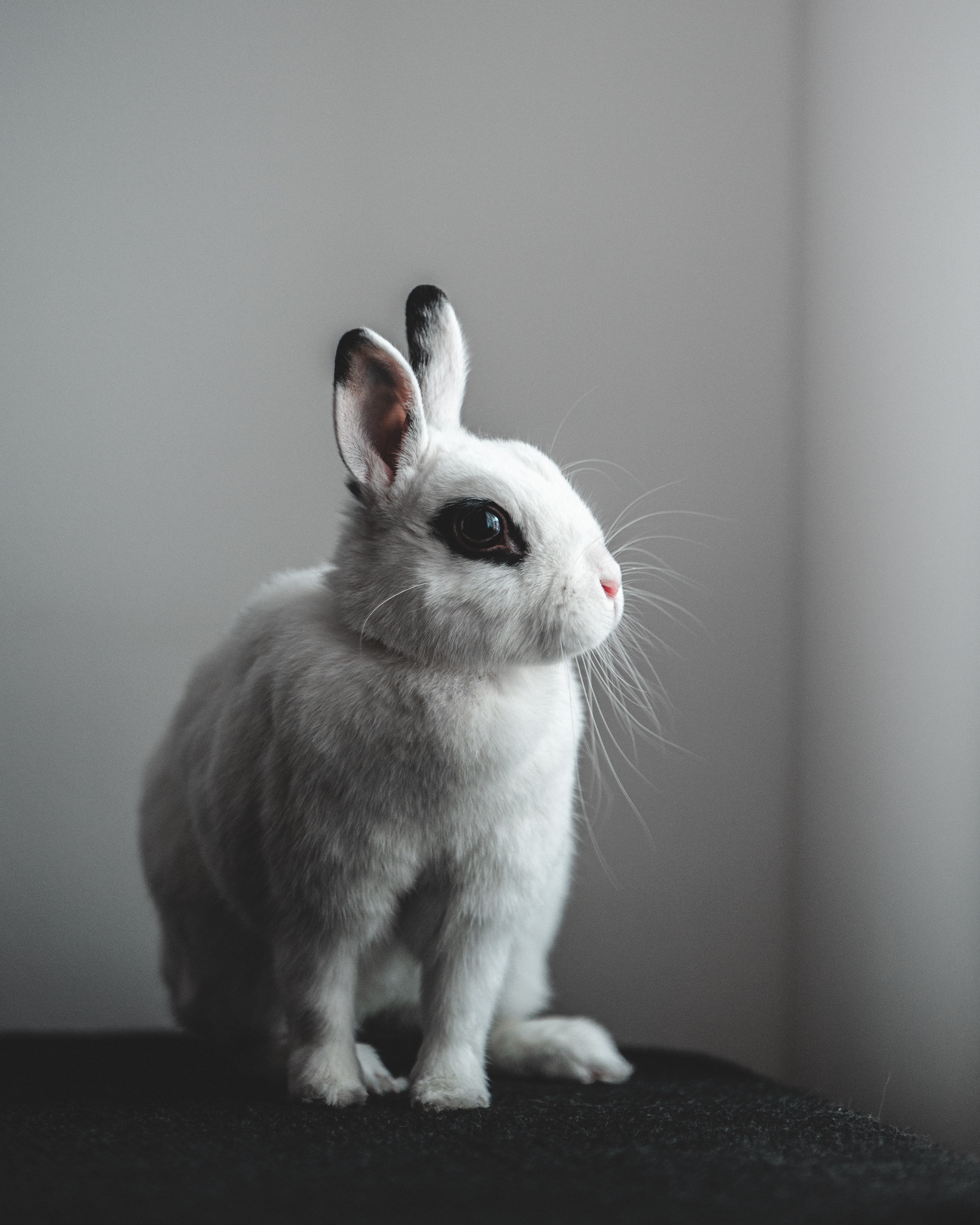 Photo by Tamas Tuzes Katai on Unsplash.
Photo by Tamas Tuzes Katai on Unsplash.Normal body temperature for a rabbit is between 100.5F - 102.5F (38.1C - 39.1C).
Temperature readings of 102.6F - 103.5F (39.2C - 39.7C) may be elevated due to pain or stress. Rabbits find handling and transporting stressful and that can translate to higher body temperatures. If you see the temperature at 103F or above, wait a few minutes, pet and speak softly to the bunny before trying again. If the reading has not changed, you may be dealing with a fever. At this point, consider consulting with your vet.
Any temperature above 104F (40C) is considered a fever and needs to be addressed immediately. Temperatures lower than 100.5 should also put you on alert and you should seek veterinarian help. A lower temperature indicates a slowing down of the digestive system. If not handled immediately, the temperature continues to drop and the bunny may go into shock.
Identifying Rabbit Pain with Grimace Scales
Grimace Scales have been developed by research facilities working with mice, rats and rabbits to recognize the presence of pain and effectively alleviate it. The scales focus on the shape and position of the eyes, ears, whiskers, nose and cheeks to determine the severity of pain.
Click here to read more about the Rabbit Grimace Scale developed by Dr. Matthew Leach at the Newcastle University.
Available Now!
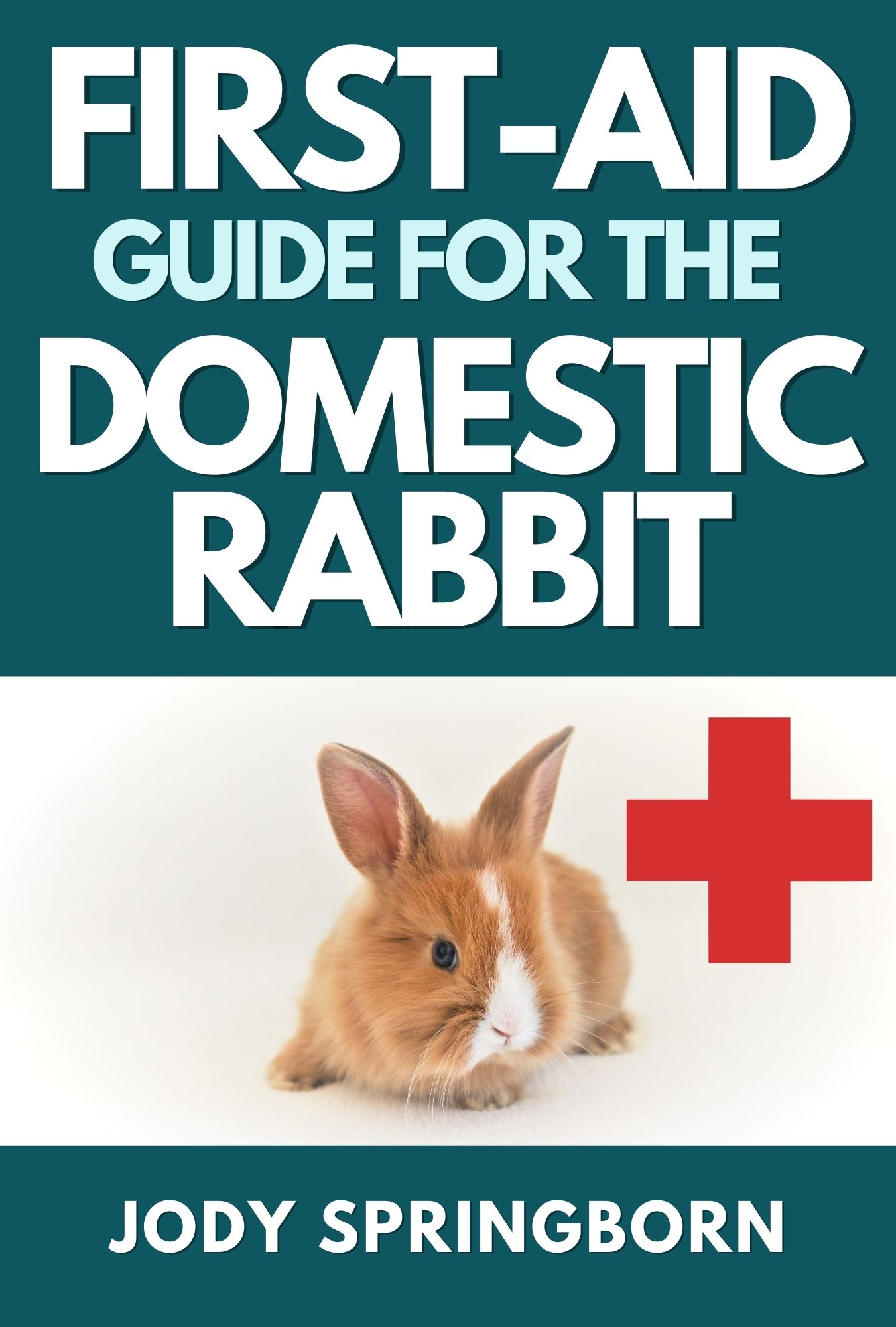
Often times, rabbit health issues require immediate attention. My First Aid Guide for the Domestic Rabbit will show you the most common health issues and teach you the basic skills you should have when your bunny needs you the most. There are over 100 color photos that show you all the supplies you need and how to help your rabbit in easy to follow step-by-step instructions.





